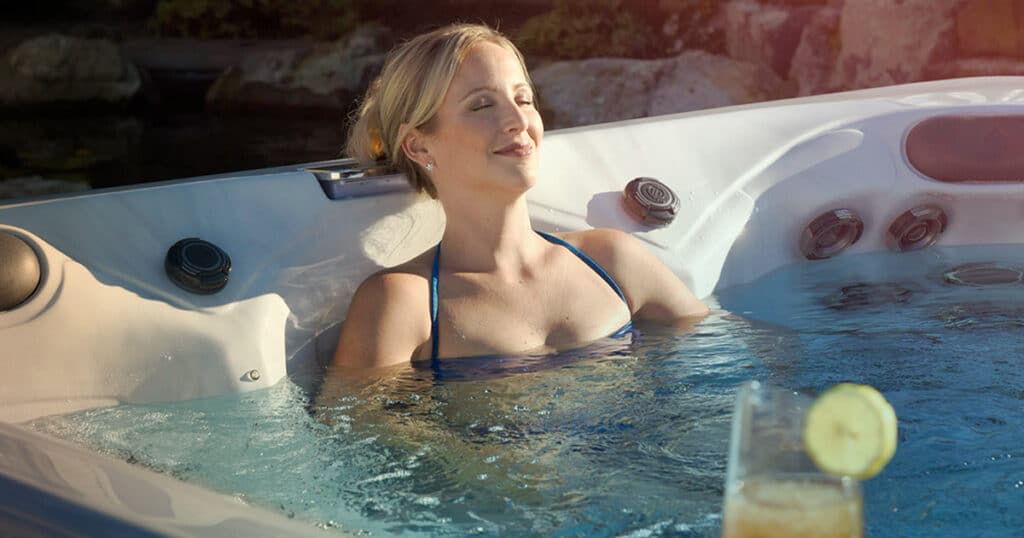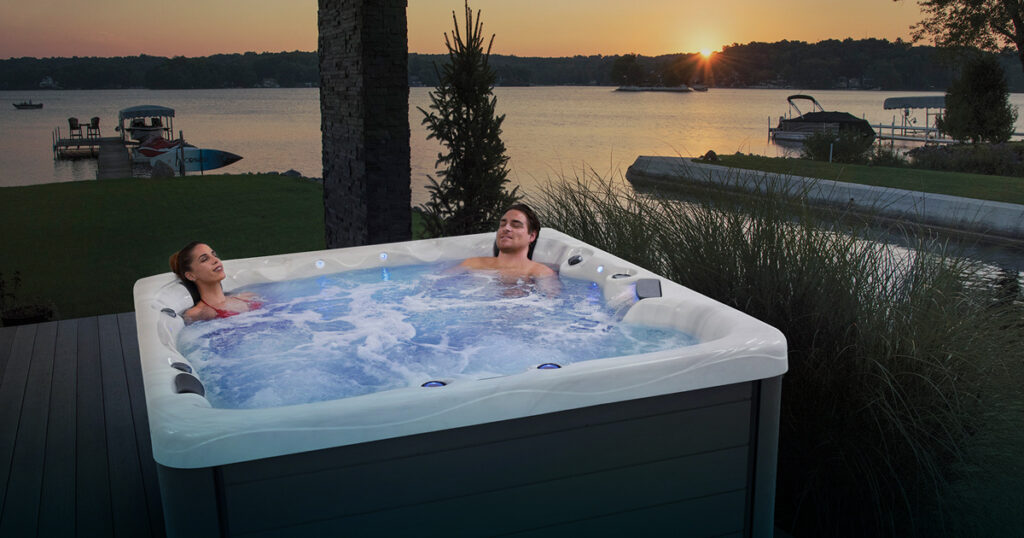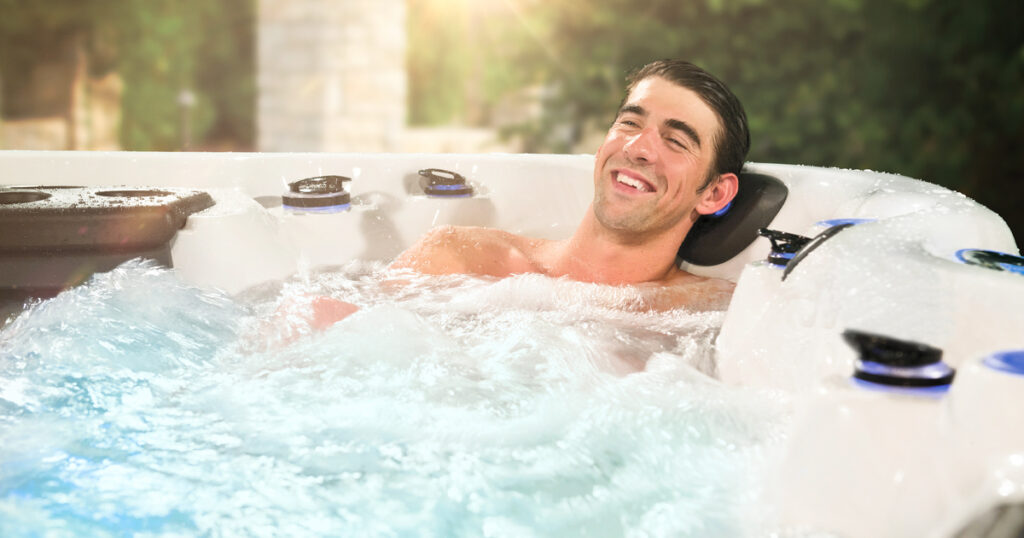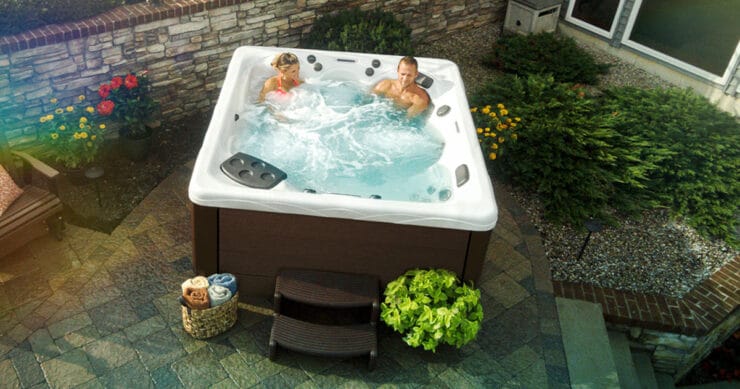You can feel it when you get up to get a glass of water or change positions at your desk. The soreness in your muscles is not anything new. In fact, most of us are bound to experience muscle soreness as it’s the body’s natural response to most any physical activity. A day at an amusement park or trying a new workout can lead to sore muscles. However, you would prefer if the soreness was brief and not something you live with day to day.
Over-the-counter pain relievers, topical ointments, stretching, and gentle exercise are all ways to relieve muscle soreness. Massage and cold-water immersion have also been shown to be therapeutic.
However, when you are feeling discomfort, you don’t want the remedy to add to that feeling. Seriously, who wants to walk it off when their legs are already sore? Maybe that’s why many athletes incorporate hot tubs into their recovery routines.
From increased circulation to stress relief, hot tubs can help with sore muscles in a variety of ways. A backyard hot tub can make rejuvenating tired and sore muscles convenient and comfortable.

Causes of muscle soreness
Many people associate muscle soreness with exercise. Whether you are a beginner or a competitive bodybuilder, a change to your fitness routine can cause soreness and stiffness.
Exercise-associated soreness is also known as DOMS. Affecting how fast the muscle contracts, you might notice a lack of strength, stiffness, and change in range of motion. It was once thought that lactic acid was behind this muscle soreness. However, the soreness is related to microscopic tears in the muscles.
If you have DOMS, you can expect it to start a day or two after your workout and last up to five days. How sore you are and how long until you feel 100 percent will depend on the workout.
Exercise isn’t the only thing that can cause muscle soreness, though.
Stress, inflammation, poor posture, and chronic conditions, such as fibromyalgia, can cause muscle pain.
When you are looking to recover from muscle soreness, be sure to check in with your body. Pain is different from soreness. If you feel a sharp or sudden pain, it might be the sign of an injury, strain, or sprain.

Sore muscles and hot tubs
It’s almost impossible to avoid muscle soreness. However, you can find ways to speed up your recovery and get back to feeling like you.
Hot water has been used for thousands of years to help alleviate and treat myriad conditions. From the Greeks to the Japanese, soaking in baths was seen to help maladies and offer enjoyment.
In the 1940s, the idea of a whirlpool was introduced and led to the idea of the therapeutic hot tub.
Now, in the 21st century, most people know that soaking in a spa feels good. But how does a hot tub help muscle soreness?
Improved circulation
One way to improve muscle soreness is to increase circulation and get blood flowing to the muscles. Increased blood flow improves recovery, alleviates stiffness, and helps the joints.
Studies show that the hot tub temperature allows the blood vessels to widen, thus improving blood flow. Increased circulation is important to recovery because the blood delivers oxygen and nutrients to the muscles, allowing damage to be repaired.
At-home massage
There’s nothing like a therapeutic massage when you are struggling with muscle soreness or tension. But frequent massages, like two times a week, are often reserved for professional athletes. Most of us are not going to be able to make multiple appointments, even if we know it’s helpful. Hot tubs feature jets that provide a soothing, therapeutic massage. Water and air are directed through the jets, applying pressure to sore muscles.
Stress-induced muscle soreness is often found in the neck and shoulders. Many Master Spas hot tubs have out-of-water jets that target this high tension area. By choosing the pressure of the water, you can customize your massage to best relieve muscle soreness.
Reduced stress
You just read it — stress can cause muscle pain and tension. According to the American Psychological Association, stress causes your body to be on guard. This state of alertness causes the muscles to be taut. When this happens for a prolonged period, you can experience muscle tension and pain.
Not only does soaking in a hot tub help with the physical part of soreness, it can help improve your mental well-being. Your time in the hot tub is a chance to turn off devices, enjoy the peace and quiet, soak up some vitamin D, and enjoy time in nature. All of these things have been shown to reduce stress and benefit your mood.
Stretching
It can be hard enough to make time for a workout much less another 15 to minutes of stretching and refueling. However, stretching is often underrated. A few minutes can help relax your muscles. If you don’t have time after a session, soaking in a hot tub makes your muscles pliable and improves range of motion. The buoyancy of the water will help you get deeper into a stretch without risk of injury. The result? Less muscle soreness.
Gentle movement
The first law of motion is that an object in motion stays in motion. When we stop moving our bodies, it will be harder to start moving again. This lesson applies to muscle soreness, too. While it seems counter intuitive, gentle exercise like swimming can improve your muscle soreness.
Before you ask — no, you can’t swim in a hot tub. (However, you can swim in a Master Spas swim spa!)
You can use a hot tub to do gentle movements, such as knee hugs or yoga. These light exercises can help you improve soreness, get the blood moving, and help you flush out any lactic acid.

How to buy a hot tub
Are you ready to say goodbye to muscle soreness? A hot tub can help you ease aches and pains, while improving your overall well-being. You can click here to find out more about the benefits of hydrotherapy and relaxing in a hot tub. Or, contact your local Master Spas retailer to learn more about swim spa ownership. Wondering how much a hot tub costs? You can request a quote here.


